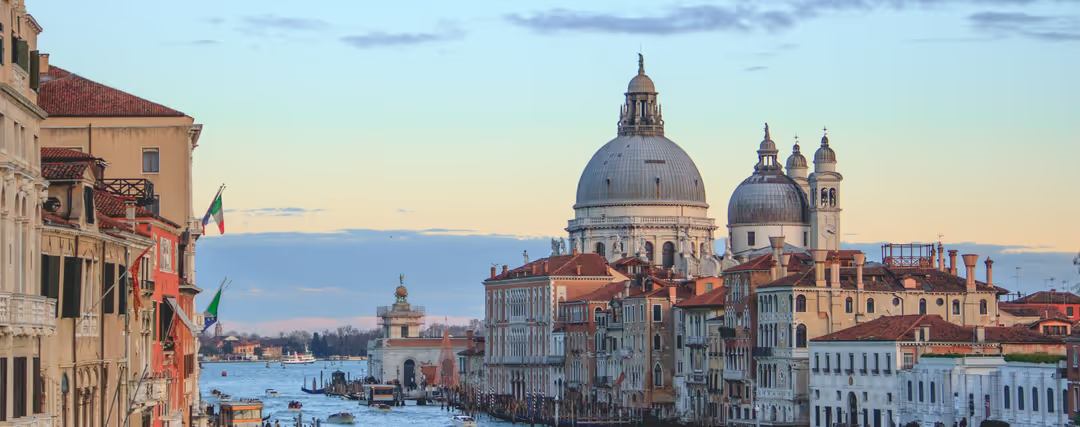

An Erasmus in Italy, a land of art, history, gastronomy and unparalleled charm, stands as the perfect setting for an unforgettable experience. Read on to discover the most important information! The best cities to study in, options and requirements for international students, what to do during your stay, different accommodation options and information about the best Universities. Andiamo!
From the cobblestone streets of Rome to the serene beaches of the Amalfi coast, every corner of the country welcomes students from all over the world who want to immerse themselves in the local culture, enjoying its people, its typical food, its monuments and its landscapes. And let's not forget the lively nightlife, characteristic of an Erasmus in Italy! Starting with an aperitivo in a bar, the night can last until the sun rises.
This Mediterranean country hosts some of the most popular destinations among students for Erasmus, thanks to its history and vibrant culture. Rome, the Eternal City, is a melting pot of history and modernity. Florence, in the Tuscany region, is an open-air museum with its iconic museums, Renaissance architecture and beautiful scenery. Charming Bologna, known for its arches and excellent cuisine, attracts students with its welcoming and cultural atmosphere. Milan stands out as the epicentre of fashion and design and Venice distinguishes itself with its canals and unique atmosphere, while Naples surprises with its chaotic vitality and proximity to the wonderful Amalfi coast. Each Erasmus destination in Italy has its distinctive charm and offers unique opportunities to explore Italian history, cuisine and lifestyle. Choose your own adventure!
These are some of the most common requirements that your institution may ask you for the exchange:
There are thousands of reasons to do your exchange in this country, but one of the main ones is to have the opportunity to immerse yourself in the Italian way of life. The country has a rich cultural heritage, from ancient Rome to the Renaissance. Living in Italy for a while allows you to get to know its history, art and monuments more closely.
The weather indeed changes a lot depending on whether you choose to live in a city in northern or southern Italy. However, the climate in the country is considered Mediterranean-continental, which indicates that there are usually pleasant temperatures and allow you to enjoy beaches in summer and mountains in winter. Just make sure you pack well to have everything during your stay!
Vuoi parlare italiano? Many students take advantage of their stay in the country to learn or improve their Italian. This will not only help you in your professional and personal life in the future, but will also allow you to communicate better with the locals. Many universities offer free Italian courses, find out if this is the case for yours!
Of course, Italian gastronomy is another reason to choose this country as an Erasmus destination. Because mamma mia! From pizzas to tiramisu, pasta, gelato, wines and coffee... You have to take the opportunity to try everything! An important fact to keep in mind: usually in the cantines of the universities you can taste typical dishes at affordable prices.
Endless opportunities are waiting for you in The Boot, a country that you’ll be able to explore from north to south enjoying its geographical diversity and its different regions. Here’s a summary of some of its highlights:
If you love fashion and even want to enjoy alpine culture while skiing in winter, the regions of Lombardy, Veneto and Emilia-Romagna in the north of the country are perfect for you. Fashion Week in Milan, the canals in Venice, the landscapes of Lago di Como and the ski resorts in the Dolomites are just some of the attractions. In northern Italy, you can also visit the regions of Piamonte, with the important city of Torino, and Liguria, home to the famous Cinque Terre area.
In central Italy, Tuscany, Umbria and Lazio are regions of great historical and cultural influence. The capital, Rome, is a must-see where you can immerse yourself in monuments such as the Colosseum, the Trevi Fountain and the Pantheon. Also worth mentioning is the city of Florence, where you can immerse yourself in the art of the Uffizi Gallery, the Cattedrale di Santa Maria del Fiore and watch the sunset from Piazza Michelangelo.
For its part, the south of the country includes Campania, Apulia and Calabria, regions known for their warm climate, spectacular beaches and national parks. Enjoy lively cities such as Naples and Palermo with their delicious gastronomy (you can’t miss the typical Neapolitan pizza); relax on incredible beaches on the Amalfi Coast; exercise in national parks such as Aspromonte, Pollino and the Sila; explore unique small towns such as Alberobello and Locorotondo.
And, finally, Sicily and Sardinia are two islands that have particular cultural identities. Sicily, close to Africa, has historically been a melting pot of influences, while Sardinia has a distinctive culture and stunning natural landscapes.
Find the ideal accommodation in your desired location